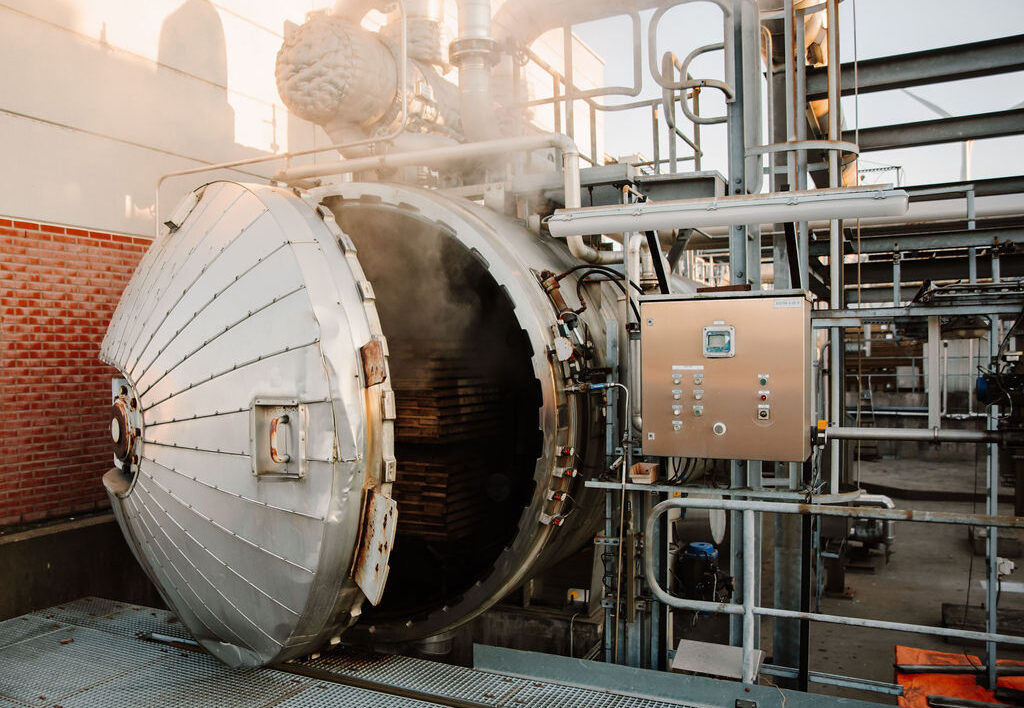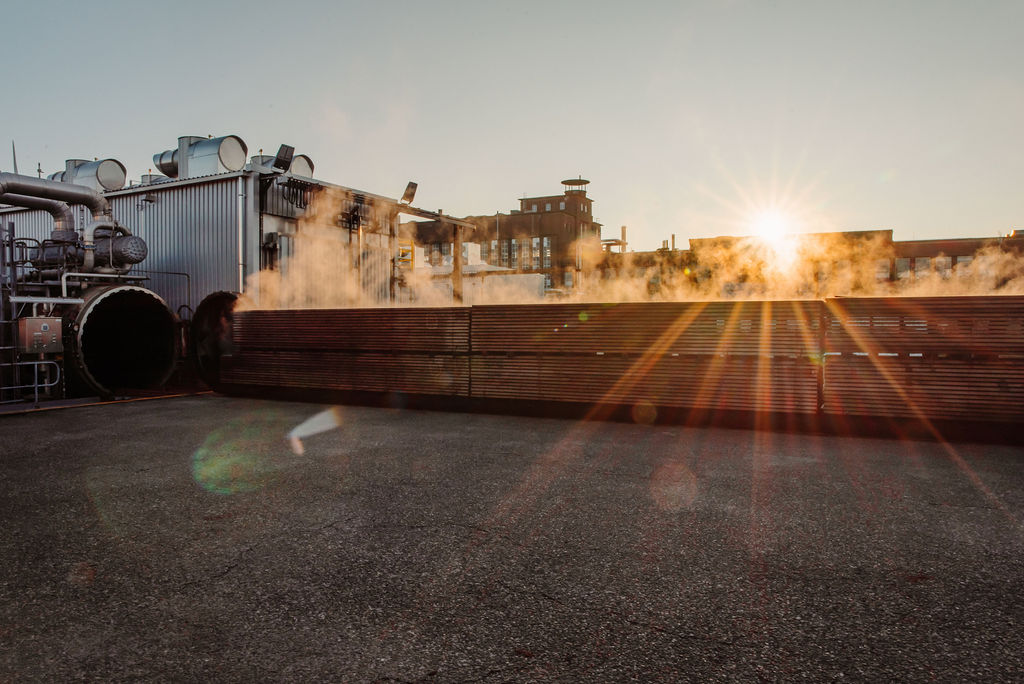Thermal modification and hydro-thermal modification — terms that are often used interchangeably. Understandably so, since the techniques share many similarities. Both enhance the lifespan of wood in an environmentally friendly way. However, there are key differences that influence the technical properties of the wood.
Why is wood thermally modified?
In both thermal and hydro-thermal modification, wood is heated to high temperatures in an oxygen-poor environment. This causes chemical changes that reduce moisture absorption and improve dimensional stability, changes that increase the durability of the wood. Thermally modified wood is also known as "thermowood".

(Photo: autoclave - Michèle Giebing)
What’s the difference between thermal and hydro-thermal modification?
Hydro-thermal modification involves an additional step before the heating process: boiling. At Platowood, wood is "boiled" in an autoclave using saturated steam under high pressure. This increases the reactivity of the wood’s molecular structure, allowing it to be further heated at relatively lower temperatures for modification.
This unique combination of boiling and baking is what we call "platonizing". Platowood is the only wood refiner using this technique.
Similarities between thermal and hydro-thermal modification
Both methods involve heating the wood, which gives it a characteristic dark color. This warm brown tone will naturally fade when exposed to the elements, turning grey over time, a natural process that does not affect the wood’s durability.
Additional benefits of hydro-thermal modification
However, the way the wood greys differs. Due to Platowood’s steaming process, resins and sugars are extracted, resulting in more uniform greying. Boiling followed by lower-temperature heating also offers benefits such as preserved flexibility and strength. As a result, Platowood wood remains more flexible and retains adequate screw withdrawal resistance, making it suitable for applications like window and frame wood, unlike standard thermally modified wood.
| Thermal Modification | Hydro-Thermal Modification | |
| By whom? | Commonly known as "thermowood" by various producers | Platowood |
| Process | Baked at high temperature | Boiled and baked at relatively low temperatures |
| Applications | Façades, sunshades, interiors, decking | Façades, sunshades, decking, interiors, windows and frames |
| Fire Classification | Ask the manufacturer | Untreated Platowood Spruce and Fraké meet Fire Class D |
Key Considerations
Both thermal and hydro-thermal modification reduce the elasticity of wood, making it unsuitable for heavy structural applications. Lower moisture absorption in both cases reduces mold risk but also affects the wood’s fire reaction.
From August 20, 2024, all wood used in buildings — including thermally modified wood — must demonstrably meet Fire Class D. Good news: untreated Platowood Spruce and Fraké already comply with this requirement.
Want to learn more about hydro-thermal modification or the Fire Class D regulations? Feel free to contact us.
